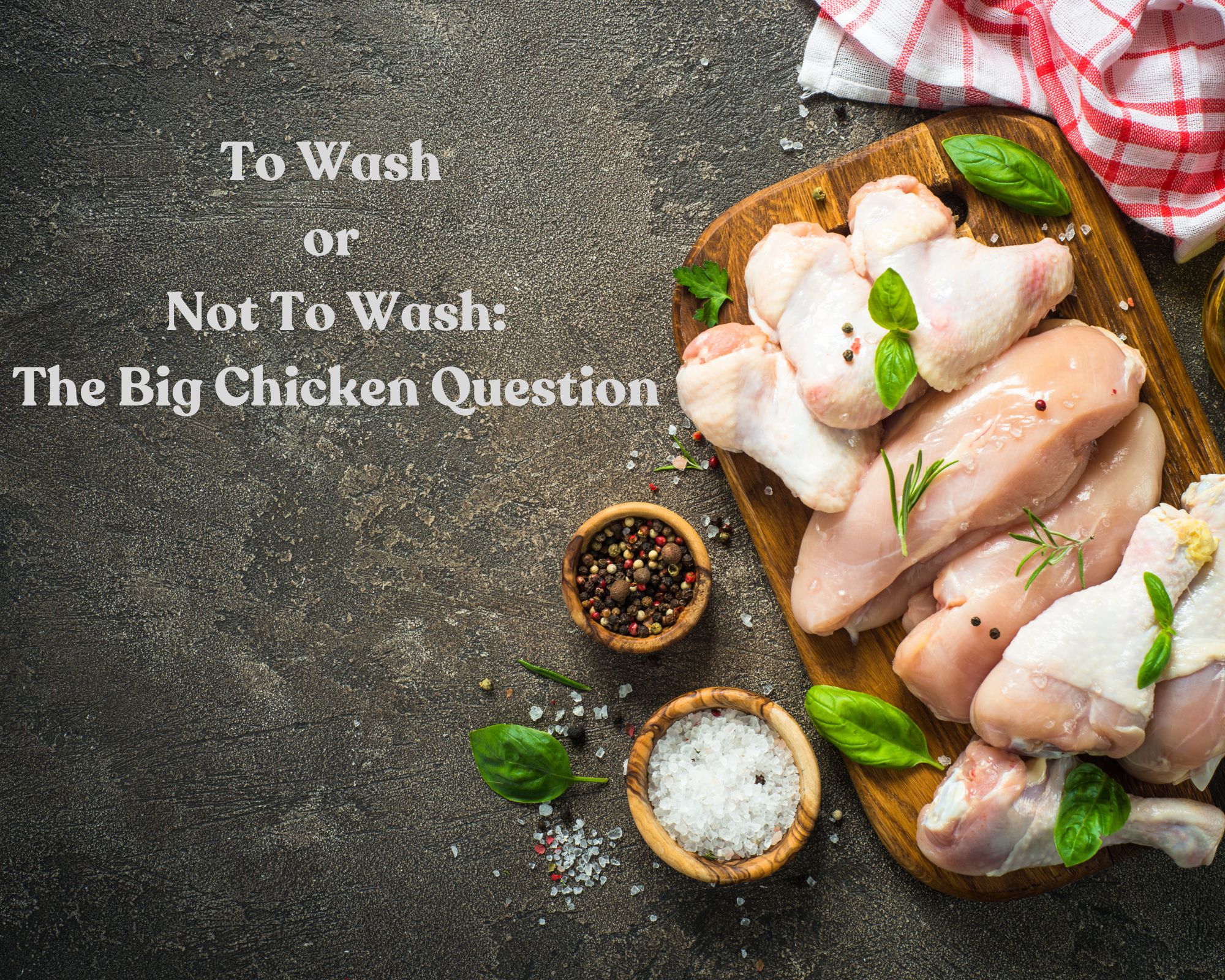To wash or not wash? That is the question Shakespeare might ask about poultry prep in the kitchen. On the surface (no pun intended), it seems logical to give the bird a quick rinse. After all, the meat can be a little slimy coming out of the packaging. And then of course there’s the risk that it carries salmonella and could make us sick. But while we may have been told by our parents, friends, or grandparents to wash chicken before cooking it, authorities strongly suggest —actually, they insist — on quite the contrary.
According to the USDA, cooking chicken at proper temperatures is the only way to kill pathogens that can lead to food-borne illnesses. In fact, rinsing meat before cooking can actually increase the risk for cross-contamination in the kitchen. That’s because in doing so, bacteria can be splashed onto your countertop, chopping board, utensils, or other surfaces in the kitchen and contaminate other foods if not properly cleaned and sanitized. The USDA also tells us to never use soaps or detergents on our meat because they can contaminate our food with chemicals and make them unsafe to eat (and no, TikTok: Nyquil shouldn’t be used, either). While farmers and ranchers may have washed their meat decades ago because they prepared their own food, modern-day processing facilities perform the meat-cleaning process so you don’t have to.
Abstaining from washing meat before cooking is so important, it’s one of the first things taught in sanitation classes at culinary schools (or in ServSafe training courses) before you even pick up any knives or handle food of any sort. There’s another downside to rinsing chicken, and especially skin-on chicken; adding more moisture will simply make it harder to achieve that crispy skin we all crave.
So, whether you’re roasting, sautéing, grilling, frying, air-frying, or braising chicken, always make sure the meat’s fully cooked through. You can do this by ensuring there’s no red-hued flesh or red juices running out. The safest way to know for sure your chicken is cooked through is to use a meat thermometer and make sure the internal temperature reads at least 165°F before consuming. This goes for all poultry, whether cooked whole, in parts, or in ground form. If you’re roasting a whole bird, check the thigh and legs first to ensure the internal temperature is nearing 160°F (allowing the temperature to increase five degrees while resting). The dark meat always takes longer to cook than the breast.
Getting back to the washing convo, what you do want to wash is your hands, chopping board, knives, and any utensils that have come into contact with the raw poultry immediately afterward. When handling raw chicken, just do that — nothing else — and be sure everything is cleaned thoroughly before doing anything else. For example, remove the chicken packaging and throw it out immediately (investing in an automated garbage can is good idea for this purpose, otherwise be careful not to touch the lid). Go right back to your chopping board and do any other prep you need to do with the raw poultry, transferring the prepped product to a separate tray, plate, or bowl. Then, then take the chopping board, knife, kitchen shears, and anything else used during the prep directly to the sink and wash everything with soap and water, including your hands (we suggest using the back of your hand, your forearm, or clean part of your palm to turn on the water and dispense the soap if you don’t have an automated faucet or dispenser). For extra safety, consider spraying down the area where you worked with antibacterial cleaner and wiping the surface down thoroughly. This all sounds a little over-the-top, but there have been studies and documentaries showing just how many surfaces can accidentally get contaminated with salmonella bacteria if we’re not careful in the kitchen.
A side note: plastic chopping boards are better than wooden ones for handling raw meat and poultry because wooden boards tend to harbor more bacteria due to all the crevices caused by repeated knife usage. If you’re REALLY serious about sanitation or want to do what chefs and professional culinarians do, consider purchasing a separate, plastic cutting board for meat prep only. If you see chefs using red-colored chopping boards when handling meat in kitchens, that’s because it’s the standard color used for raw meat prep.
You also want to refrain from rinsing frozen poultry in an attempt to thaw it. Instead, transfer the meat from your freezer (or shopping bag) to the fridge a day or two before use. In a pinch day-of, it’s ok to submerge the frozen chicken in a large bowl filled with cold water, but ONLY if it’s still in its original plastic wrapping (or placed in a resealable plastic bag) so that no water comes into contact with the actual chicken. You can let it sit in the water for half an hour at a time, refreshing the water two to three times every half hour until thawed. Don’t use warm or hot water, as that can cause more bacteria to grow. Then, transfer the meat back to the refrigerator if not you’re not using it until a little later that day. Never put previously frozen, thawed chicken back in the freezer, as that can create more harmful bacteria to form.
But wait, there’s more! Rinsing chicken is still not OK even after you’ve marinated it. Instead, drain the marinade by placing the meat in a colander in the sink and then pat the meat dry with paper towels as best you can. Don’t forget to wash your hands and all the bowls used!
Now you can spread the love — not the bacteria — and tell all your family and friends about your new chicken handling expertise while you enjoy your delicious home-cooked meal.
